The Best Stretch Mark Treatments, According to Experts
Dermatologists explain how—and if—stretch mark treatments can prevent and remove changes in color and texture.
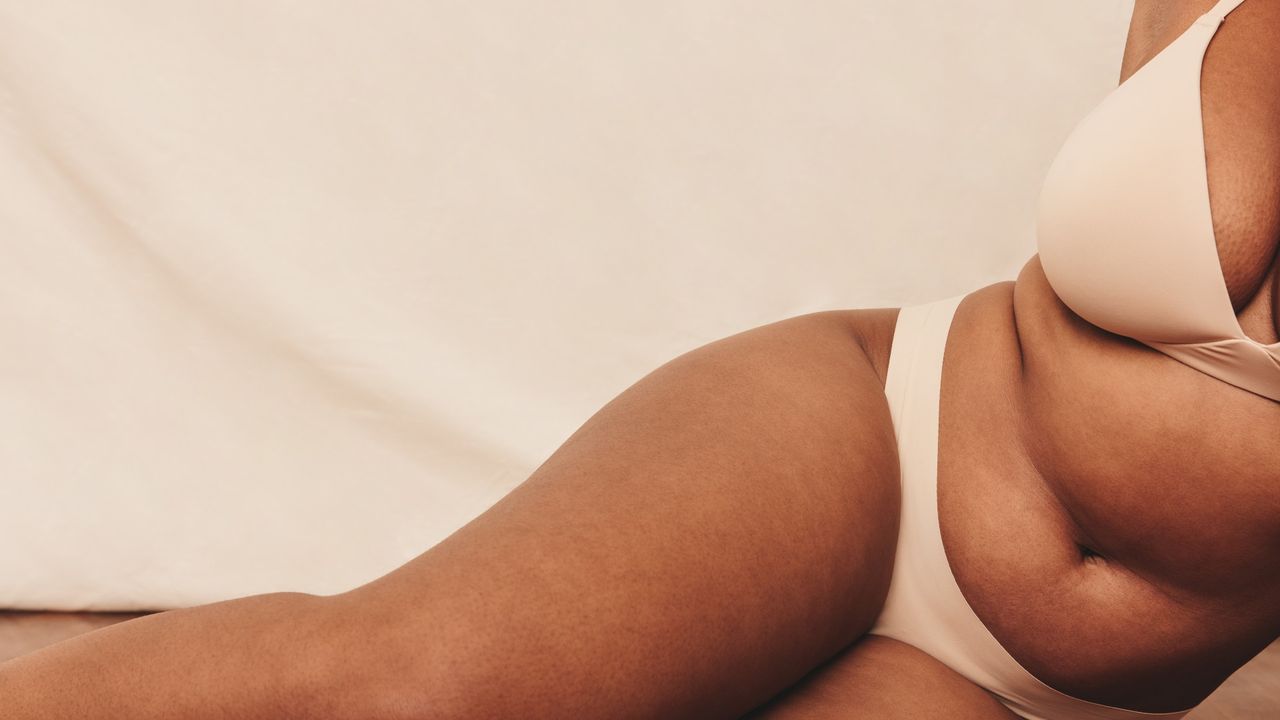

First things first: Stretch marks are *extremely* normal—around 90 percent of women have them. The cause of stretch marks is unknown, but by and large you can form them during puberty, develop ‘em when you’re growing a tiny human in your stomach, and even get them from losing weight. The size, shape, and even color of stretch marks can differ person to person, but they’re likely going to present red, pink, or white in color. The one defining factor across the board? Stretch marks are permanent scars, so getting them to completely disappear (if that’s what you want) isn’t all too realistic.
That said, take a quick walk through a Sephora or do a search on Amazon, and you’re bound to find dozens of creams, gels, and oils that claim to remove stretch marks. And while there are benefits to topicals (we’re going to dive into it, don’t worry), over-the-counter products are only going to reduce the look of stretch marks to a certain extent.
“There isn’t any hard evidence that topical creams fade stretch marks after they appear,” explains New York City-based dermatologist Dr. Shereene Idriss. “However, it is possible that they can slightly help the appearance, depending on how light or how dark the mark is.”
To get a better temperature check on what’s realistic when it comes to fading, preventing, or treating the texture and color of stretch marks, keep reading. We tapped the pros to get the down low on it all—and find out what to look for in the best stretch mark creams.
What Is a Stretch Mark?
To put it simply: a stretch mark is a scar that’s the result of thinning skin. “Although the exact causes of stretch marks are unknown, they are often associated with pregnancy, sudden changes in weight, rapid growth, genetics, and prolonged use of topical corticosteroids,” explains Dr. Marie Hayag, board-certified dermatologist and founder of 5th Avenue Aesthetics. “They are most common among adolescents and pregnant women and typically form in the abdomen, buttocks, thighs, hips, and breasts.”
The color and texture of a stretch mark can vary depending on where it is in its lifecycle—a freshly formed mark is going to look a heck of a lot different than one that’s been there for a decade. “Early stretch marks can appear slightly raised and red in color when compared to our normal skin because of inflammatory mechanisms in our body,” Dr. Hayag explains. “As the inflammation calms down, stretch marks then become lighter in color and feel more depressed.”
Can I Prevent a Stretch Mark From Forming?
While there’s no hard and fast prevention method for stretch marks, there are a few things you can do to reduce the likelihood you’ll develop them. The top tip? Keep the skin uber-hydrated and reach for products that can clinically prove an increase in elastin (the bounciness in the skin) and collagen (the plumpness in the skin). “If you’re looking to prevent stretch marks from forming, it is best to keep your skin moisturized and hydrated, which will ultimately help elasticity and strengthen the skin,” advises Dr. Idriss. “When purchasing products, I usually look for those packed with nourishing ingredients such as cocoa butter, jojoba, shea butter, coconut, and hemp, as well as sunflower, peppermint, and patchouli oils.”
Stay In The Know
Get exclusive access to fashion and beauty trends, hot-off-the-press celebrity news, and more.
If you’re looking for a little something extra, you can also talk to your dermatologist about regular microneedling treatments, which will also help boost collagen and elastin. That said, there is a large genetic component to stretch marks, and paired with other factors, stretch marks can be unavoidable.
How to Reduce the Appearance of Stretch Marks
Topicals
Using a cream on your stomach, breasts, or bum isn’t going to harm you, so go ahead—slather away. That said, it’s important to manage expectations with a topical, store-bought product. Both derms agree that there’s not enough “hard evidence” to support the fact that stretch mark creams will get rid of stretch marks after they appear. But, you may notice some moderate changes in color or texture with regular and prolonged use. “Stretch marks can be reduced using topical creams, but results can take weeks to become noticeable and vary for individuals,” says Dr. Hayag. She also notes that because stretch marks are technically scars, getting rid of them entirely is very difficult.
If you are interested in a topical cream however, there are a few active ingredients you’re going to want to keep an eye out for. Dr. Hayang explains that an ingredient called regestril is effective at increasing collagen production and should be a go-to for newly-formed stretch marks. “It can help lessen the depth, width, length, and pigment changes of the scar,” she adds. Another common ingredient is called regu-stretch, which has been specifically formulated for the treatment of stretch marks. The chemical combo contains anti-inflammatory properties, hyaluronic acid, and peptides. Retinoids are another great option as it can increase collagen and decrease redness. That in mind, pregnant women should not use it. You should also avoid products containing parabens and phthalates, as these ingredients can be harmful to our reproductive system, liver, and kidneys.
“In order to reduce the length, width, and any elevation, it is important to start applying topical treatments on new scars as they are more receptive to the active ingredients in stretch mark creams,” adds Dr. Hayag.
Lasers
One of the most widely-accepted treatments for stretch marks is the use of in-office lasers, specifically VBeam and Fraxel. According to Dr. Idriss, the former “targets and treats the red-colored stretch marks,” while the latter can address both texture and color in superficial and deep scars. “Newer stretch marks make you a good candidate for VBeam and the settings can be adjusted for different skin tones,” Dr. Idriss explains. “Fraxel is better for older stretch marks that fade to depressed scars as it targets skin texture and color.” (Doctor’s note: Both lasers make the skin more sensitive to the sun, so applying—and reapplying—SPF is of utmost importance.) To see any results, you’ll typically need anywhere from four to six sessions.
Dermal Fillers
Dermal filler, like one brand called Radiesse, can also help fill in inset scars. “They tell our body to produce more collagen, elastin, and blood vessels, which help reduce the size of the stretch marks,” adds Dr. Hayag.
The Best Stretch Mark Removal Creams
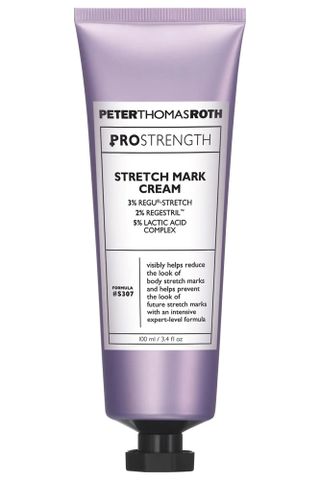
With regu-stretch, regestril, and a lactic acid complex, this cream has multiple A+ ingredients. Add nourishing and hydrating ceramides, cocoa butter, and shea butter to the mix, and this cream will do its part to increase the skin’s elasticity and collagen production. While it can be lathered all over your body, it’s not recommended for use on the breasts.
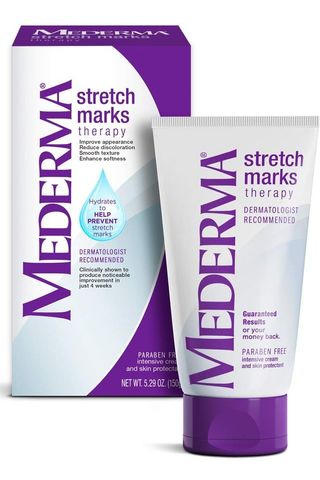
This paraben-free formula is ideal from a preventative standpoint. Plus, it is safe for use on the breasts during breastfeeding. One of the main ingredient callouts here is centella asiatica, which, according to Dr. Hayag, “helps increase the levels of collagen synthesis … and was found to be effective in the prevention of stretch marks.”
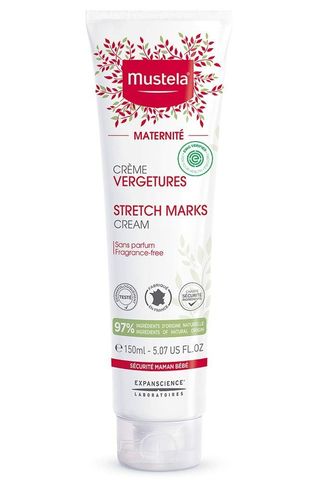
If you have a baby on board and want to keep your skin the most supple, hydrated place possible, reach for this drugstore favorite. It’s pregnancy-safe, doesn’t include any chemicals or toxic gunk, and feels extremely nourishing on the skin.
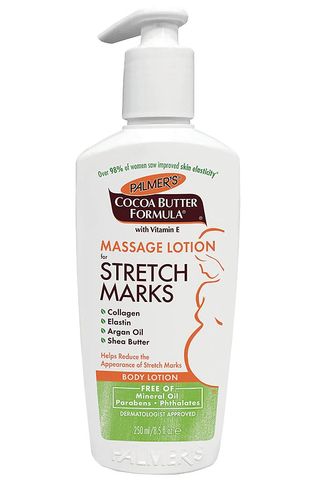
This cream does double duty. Not only does it work to prevent the formation of stretch marks, but it’s also focused on improving the overall texture of the skin once stretch marks have occurred. While stretch mark reduction will differ person-to-person and nothing is guaranteed, this product does have some rave reviews. It received nearly 40,000 reviews on Amazon and has an average rating of 4.6.
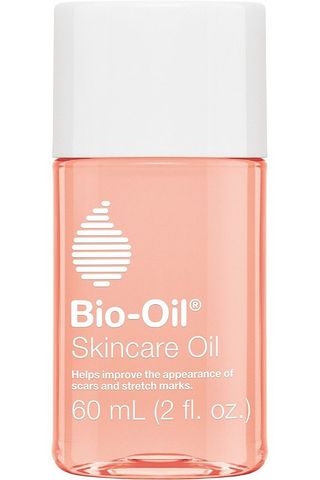
With cult-favorite status, it’s no surprise this oil made it on our list. The vitamin-packed, dry oil works to lighten and reduce the appearance of stretch marks, post-surgical scars, and other marks. How, you ask? Ingredients like camomile and lavender work to reduce inflammation, while vitamins A and E increase elasticity.
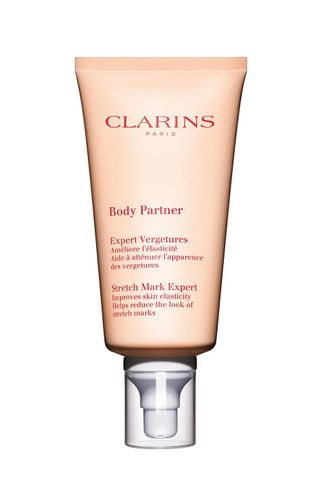
Centella asiatica and acids are two ingredient callouts in this formula. When paired together, they work to firm, tighten, and resurface the skin. One person even pointed out that the cream made their stretch marks “look lighter” and “much better” after two months of daily use.
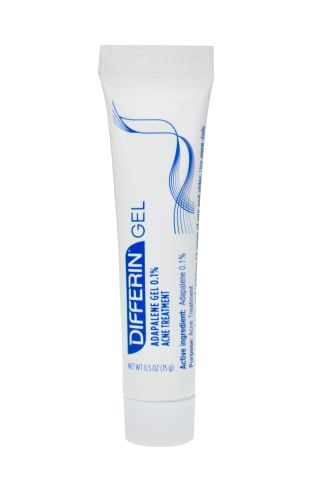
While Differin is an over-the-counter option, you can also turn to your dermatologist for a prescription retinoid. Across the board though, this vitamin A derivative is going to help increase cell turnover and boost elasticity. It can be irritating, so make sure to ease into it and consult with your dermatologist. Results will be most effective when this is used on newly-formed stretch marks.

Samantha Holender is the Senior Beauty Editor at Marie Claire, where she reports on the best new launches, dives into the science behind skincare, and shares the breakdown on the latest and greatest trends in the beauty space. She's studied up on every ingredient you'll find on INCI list and is constantly in search of the world's glowiest makeup products. She's constantly tracking the biggest nail and hair trends to pop up in the beauty space, going backstage during fashion weeks, tracking celebrity looks, and constantly talking to celebrity hair stylists, nail artists, and makeup artists. Prior to joining the team, she worked as Us Weekly’s Beauty and Style Editor, where she stayed on the pulse of pop culture and broke down celebrity beauty routines, hair transformations, and red carpet looks. Her words have also appeared on Popsugar, Makeup.com, Skincare.com, Delish.com, and Philadelphia Wedding. Samantha also serves as a board member for the American Society of Magazine Editors (ASME). She first joined the organization in 2018, when she worked as an editorial intern at Food Network Magazine and Pioneer Woman Magazine. Samantha has a degree in Journalism and Mass Communications from The George Washington University’s School of Media and Public Affairs. While at GWU, she was a founding member of the school’s HerCampus chapter and served as its President for four years. When she’s not deep in the beauty closet or swatching eyeshadows, you can find her obsessing over Real Housewives and all things Bravo. Keep up with her on Instagram @samholender.
-
 What to Know About the Cast of 'Pulse,' Netflix's Soapy Medical Drama You're Going to Want to Binge
What to Know About the Cast of 'Pulse,' Netflix's Soapy Medical Drama You're Going to Want to BingeWe would trust the doctors at Maguire Medical Center with our lives.
By Quinci LeGardye Published
-
 Jennifer Lopez's Broadway Premiere Look Is Definitely Defying Gravity
Jennifer Lopez's Broadway Premiere Look Is Definitely Defying GravityShe understood the opening night assignment.
By Halie LeSavage Published
-
 Aimee Lou Wood Just Borrowed One of Katie Holmes's Favorite Bags
Aimee Lou Wood Just Borrowed One of Katie Holmes's Favorite BagsThe 'White Lotus' star dressed like an office siren for her appearance on 'The Drew Barrymore Show.'
By Hanna Lustig Published